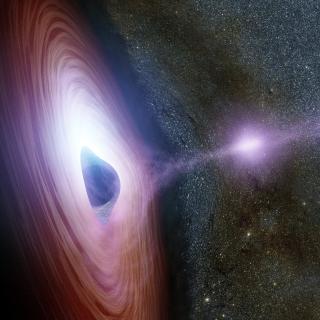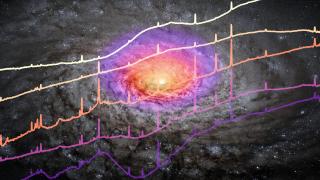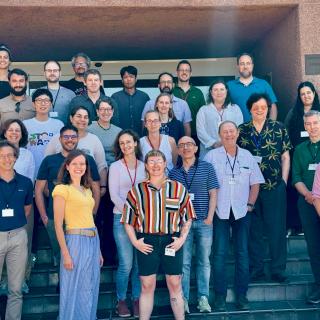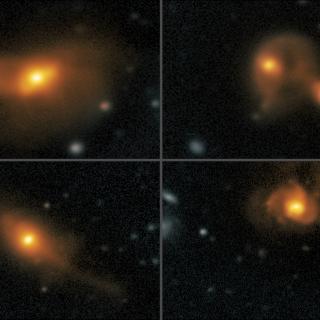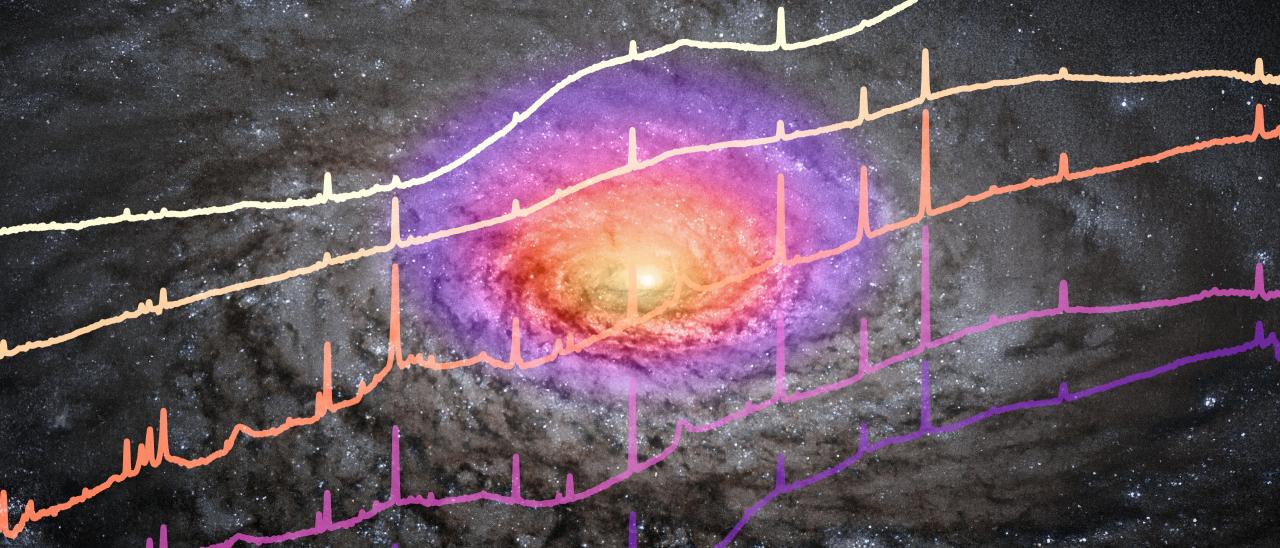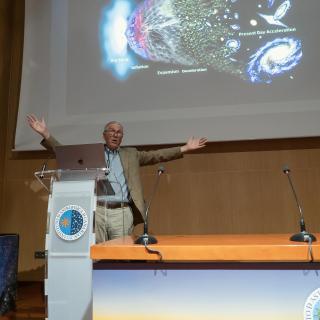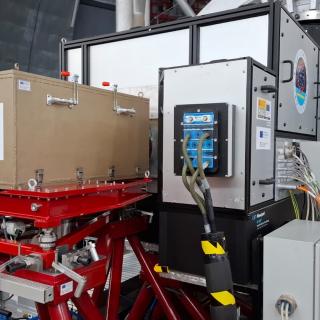An international team led by Cristina Ramos Almeida, a researcher at the Instituto de Astrofísica de Canarias (IAC), has used the James Webb Space Telescope (JWST) to observe five dust-obscured quasars — and the results offer new insights into how galaxies and their central supermassive black holes may evolve. The study is published today in the journal Astronomy & Astrophysics.
The energy released by supermassive black holes at the centres of galaxies is a fundamental ingredient in regulating the formation of new stars, and thus galaxy growth. This occurs during an active phase, usually known as an AGN, when the black hole consumes material from the galaxy at a high rate.
Type-2 quasars (QSO2s) are highly energetic AGN viewed through significant amounts of dust and gas that obscure the central supermassive black hole. Using mid-infrared spectra of five nearby QSO2s observed with JWST’s MIRI instrument, an article is being published today in Astronomy & Astrophysics by an international team led by IAC researcher Cristina Ramos Almeida.
“The five QSO2s that we observed with JWST were selected in the optical and they all have the same spectral properties in that range, typical of dust-obscured AGN”, explains Ramos Almeida. “The surprise came when we saw their nuclear mid-infrared spectra for the first time: they were all different! The infrared glasses of JWST have revealed an unexpected diversity of spectral features”.
One of the most striking differences is in the silicate features. These broad bands are commonly seen in the mid-infrared spectra of AGN and are used to characterize their dust distribution and composition. Type-2 AGN generally show silicate features in absorption — indicative of a large amount of dust between us and the supermassive black hole — while type-1 AGN often show silicate bands in emission, produced by hotter dust closer to the AGN.
“We were expecting to see silicate features in absorption in all the QSO2s with JWST, but two of them show silicate features in emission”, says Ismael García Bernete, a researcher at the Centro de Astrobiología (CAB), CSIC-INTA, and co-author of the article. He adds: “We believe this is due to the high angular resolution of JWST, which allowed us to see the nuclear region of these QSO2s for the first time, free of colder dust from the host galaxy.”
“This is not the case for other samples of less bright type-2 AGN observed with JWST, which show the silicates in absorption,” adds Ramos Almeida. “We think this is because the energy and winds that quasars produce are more efficiently clearing out the gas and dust in the nuclear region, letting us see hotter dust in those that are in a more advanced evolutionary stage.”
The mid-infrared spectra of the QSO2s also show dozens of emission lines and bands, which reveal a diversity of ionizing continuum strengths and nuclear star formation rates. “These fantastic JWST spectra allowed us to start exploring the role of various AGN and galaxy properties in some of the spectral differences listed above, but the best is still to come,” concludes Ramos Almeida.
This study is part of the QSOFEED project, led by the IAC and whose aim is to understand how supermassive black holes affect the galaxies that host them.
Article: Ramos Almeida et al. “JWST MIRI reveals the diversity of nuclear mid-infrared spectra of nearby type-2 quasars”. A&A 2025. DOI: https://www.aanda.org/10.1051/0004-6361/202453549
Contact at the IAC:
Cristina Ramos Almeida, cra [at] iac.es (cra[at]iac[dot]es)
